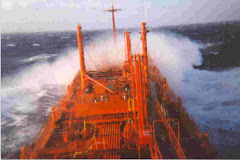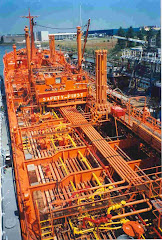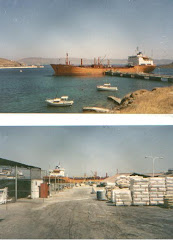No one in Brussels or Athens really seems to know what they are doing outside of Kabuki theater. Plans are made hastily and revised on a daily basis. Like the Titanic, they continue to insist that their ship is unsinkable (and there will not be any financial losses) but there are clearly not enough lifeboats for all the passengers to escape alive.
Today’s European Union does not seem very far from Thomas Mann’s masterpiece "Magic Mountain" depicting pre-WW1 Europe in an allegory of self-denial prophetically in Davos, Switzerland where there is now an annual world economic forum.
Kabuki ritual inhibits EU members from engaging in any frank and substantive discussion over the dysfunctionality of their Euro currency union. Despite their LSE credentials, George Papandreou and George Papaconstantinou give the impression of showmen rather than economic literates in terms of their performance over the past few months in the handling of this crisis, first promising expanded entitlements by soaking the rich to win the October elections, then temporizing over the debt refinancing problems until Davos and finally capitulating to the EU demands whilst feigning that they were not asking for any help. Mind you that whenever economics is laced with politics, the results are nearly always toxic no matter who are the actors involved.
Since the 2008 meltdown, it was always difficult to fathom how the remedy of socializing private losses on public balance sheets made any sense. This strategy always seemed like pushing the problem around rather than addressing the issues of overleveraging and cleaning up balance sheets in the financial industry. It was built on a wall of hope that financial engineering would lead to a robust recovery and in time, the losses would disappear like a bad dream without any pain or consequence.
Europe, overtaxed and overleveraged, is one of the most exposed regions with the slimmest means to hold out until better days. The Euro system was badly constructed on inflexible rules that Milton Friedman once called the equivalent of “locking yourself in a room and throwing the keys out the window….” It is not surprising that Eurozone is becoming a leader in sovereign debt crises and this is putting the currency union to test.
Greece was an accident waiting to happen. The last time there was productive investment was back in the 1960’s when there was a policy of balanced budgets, strict control over entitlements and major projects in refineries, shipyards and aluminum production. The Military Junta, black-listed by Western governments for loans, openly solicited private investment, with a vision to develop Greece as an offshore center for the Middle East. Greek construction companies expanded abroad in Middle East infrastructure projects. Piraeus was filled with new shipping companies. Major corporations established marketing offices in Greece and foreign banks queued to open branch offices. Greek per capita income increased three fold over a short period of time. Greece seemed a fledging emerging market economy with a GDP larger than Turkey at the time.
When the politicians returned in 1974; seething with resentment and bitterness after years out of power, they started to settle accounts with the business community who had prospered in this period. Socialism and transfer of wealth become the predominate development model and the private sector was to service the state. Onassis was driven out of Olympic Airways, the Andreadis businesses were confiscated. They created a web of laws and regulations that forced many businesses into debt and bankruptcy. This unfortunate climate was escalated by the Socialist triumph of 1981. The Socialists massively expanded entitlements, extending them to many who had never paid any contributions. They moved to socialize failing businesses, transforming them into loss-making state owned enterprises staffing them with party cronies. Public deficits soared and public debt rose rapidly. By 1986, Greece was forced to devalue the drachmae and declare the first of a serious of austerity programs. Interest expense soaked up public budgets and it was in part monetized by double digit inflation.
It was in this climate that the Socialist Party back in power after a brief hiatus in the early 1990’s decided to make entry into the Eurozone a national priority. They were enticed by the benefits of low interest rates to relieve their financial woes from their mounting debts and stagnating economy without a stable tax base. Their concept of development was use of EU transfer money for large public infrastructure projects. They used the privatization allegedly to enrich themselves on the Athens stock exchange by rampant insider trading, playing musical chairs taking positions through state-controlled corporations. They shunned arms-length professional management preferring control through union-affiliated pension funds. Brussels welcomed them in open arms because they wanted as many countries to participate as possible in the new currency union and this was a means for them to expand their markets into southern Europe. Indeed the relations between Brussels and Athens seemed almost symbiotic at the time. This EU culture of corruption is partially borne out by the Siemens trials in Germany where Siemens top management allegedly bribed Greek officials of the two major parties to obtain contracts for security equipment required for the Athens Olympics - indicative of the times.
As Simon Johnson elegantly points out in his recent WSJ piece “The Greek Tragedy That Changed Europe”:
If Greece (and the other troubled countries) still had their own currencies, it would all be a lot easier. Just as in the U.K. since 2008, their exchange rates would depreciate sharply. This would lower the cost of labor, making them competitive again (remember Asia after 1997-'98) while also inflating asset prices and helping to refloat borrowers who are underwater on their mortgages and other debts. It would undoubtedly hurt the Germans and the French, who would suffer from less competitiveness—but when you are in deep trouble, who cares?
Indeed prior 2002 when Greece abandoned the Drachma, the Bank of Greece had a policy of slow depreciation against the US dollar. Inflation was higher than hard money countries but prices were lower. People sheltered themselves by investing in real estate and holding foreign currency. Interest rates were as high as 20% at times on Greek government obligations so savings was rewarded. Consumer credit was limited. Euro entry created enormous distortions. Local prices started to rise to EU levels but salary levels lagged, putting considerable pressure on the middle and lower classes. Interest paid on savings became negligible. People turned to consumer credit to cover their diminished purchasing power. Banks prospered with enormous spreads. The Greek state was able to borrow with hard money credit ratings so the public balance sheet grew. The commercial deficits soared. Greek domestic production was replaced by EU imports. This credit expansion fueled the price increases. The Greek government was lax to take restrictive measures fearing a popular revolt since the population was under increasing economic pressure, unemployment remained high (especially youth unemployment was at disastrous levels) and they feared the bursting of the domestic credit bubble.
Brussels offered them no solace because as Simon Johnson puts it: ECB policies have been overly contractionary—resulting in a strong euro and very low inflation—and not appropriate for member countries in the midst of a financial collapse. Milton Friedman said that putting your money in the hands of others was bound to lead to conflicts.
Indeed it was the ECB according to Simon Johnson – not “speculators” - who initiated the crisis in Greek spreads when on German prodding they decided to cut off the special credit windows that they had opened to support the weaker members like Greece by buying their government bonds. This lead to higher spreads on Greek bonds, albeit 6-7% pa pricing can hardly be considered usury when credit card interest rates in Greece have been 18-20% pa on consumers. The ECB was suddenly confronted with the specter of a possible Greek sovereign debt default that was leading to massive shorting of the Euro. Fearing contagion to other weaker EU members, Brussels went into panic. Immediately all fingers were pointed to Greece to extract a ‘pound of flesh’ by the concept of an ‘internal’ devaluation whereby all salaries are cut and taxes are raised. In other words, the EU is asking Greece to massively curtail demand, lower wages and reduce the public sector workforce. It interesting to note that the last time we saw this kind of precipitate fiscal austerity—when nations were tied to the gold standard—it contributed directly to the onset of the Great Depression in the 1930s.
Unfortunately, it is almost taboo to open substantive issues on the imbalances in Euro system, which is considered virtually a ‘sacred cow’ ; much less question the wisdom of the proposed EU remedies on their weaker members. The Russian dissident Vladimir Bukovsky has said that political system in the EU resembles in many ways the former Soviet Union. Whilst the normal path for a country like Greece would be to go to the IMF for assistance, Brussels appears to see this negatively. They do not seem to want to see Greece to take an IMF credit facility and Greek politicians are too beholden to take any actions of their own. Brussels is concocting their own aid package but no one is permitted to discuss the details. Greece is obliged to say that are not asking any aid and they do not need it. Simon Johnson points out some of the reasons for this Kabuki theater:
• Many in Europe view the fund as an American-influenced institution—located three blocks from the White House for a reason—that would be invading Europe's territory. My personal experience is that Eurocrats become livid whenever any critical discussions on the Euro system by outsiders and tend to lose any sense of reason.
• French President Nicolas Sarkozy has serious personal reasons to push the IMF away. Mr. Strauss-Kahn is a serious potential challenger in France's upcoming elections; Mr. Sarkozy would hate to see the IMF play a statesman-like role on his home turf.
• Chancellor Angela Merkel, currently maneuvering to ensure a German is the next head at the ECB, is also concerned. The IMF might ask for a revision of ECB policies and request structural reforms. This would challenge the prevailing ideology among Frankfurt-dominated policy makers and reduce their power over weaker EU members.
I believe that the Greek debt crisis is really two crises: a crisis of a failed economic and political system in Greece and a failed Euro system. Indeed Greece sought refuge in the Euro because their system was a failure. I do not think that the Greek government’s stability plan has any connection with reality and I do not see it as feasible. Of course, the Greek government is hoping that Brussels will give them an ‘E’ for effort along with substantial discounts as has always been the case in the past. This will not do anything to resolve their ‘Ponzi’ public deficit pyramid. No one in Brussels seems to want to revise the Euro system albeit there is considerable academic ink being currently spent on possible alternatives such as the recent piece: “The Option of Last Resort: A Two-Currency EMU” by two Greek economists Michael G. Arghyrou and John Tsoukalas, proposing some relief for the European south.
Nouriel Roubini feels (and I concur) that things could get considerably worse:
In the end, if Greece is politically unable to do enough fiscal adjustment to forestall unsustainable debt dynamics – i.e., if it turns out to be insolvent and not just illiquid in spite of a partial financial support from the IMF and/or or the EU/ECB – one solution that is one step short of default (that occurred in Russia, Argentina and Ecuador) may be a coercive restructuring of its public debt – under threat of default – along the lines of what was done in Pakistan, Ukraine, Uruguay and the Dominican Republic. In effect, this would entail a coercive lengthening of the maturity of the debt without face value reduction of the debt (no formal haircut) together with a coercive reduction of the interest rate on the new debt at below markets levels. Such surgical solution would imply some losses for creditors on a NPV basis but much smaller losses and less systemic disruption than an outright default. As the experience of past emerging market crises suggests such coercive restructuring can be designed – even in the absence of collective action clauses – via exchange offers that bypass the need for unanimity in changes in the terms of such public debt.
Still, such a coercive restructuring of the debt would resolve – or push to the longer future – the issue of public debt sustainability. But it would not resolve – in the absence of structural reforms or outright exit from the monetary union – the problem of the loss of competitiveness and the unsustainable external balance. That is why default (or coercive debt restructuring) without devaluation may not be possible and devaluation (exit from EMU) without default may not be possible either.
Having lived though this problem in Greece, I believe that coercive restructuring of Greek public debt is the only realistic solution for Greece. Given that much of this debt is held by other EU countries, this would inflict considerable pain, especially on Germany and this is probably one of the major reasons why they appear to be so reluctant for IMF involvement. I do not see Germany, however, without responsibilities for the failed policies in the EU.
Many economists like Nouriel Roubini and Simon Johnson are making constructive suggestions to the EU on the management of this crisis. Simon Johnson even goes to far as to call for intervention of the US government to press Brussels to bring in the IMF and to cooperate assertively to help reduce the risk of further collapse in Europe.
I think that that is a fair view of the stakes involved in this matter. Neither Brussels nor Greece is really capable of resolving this complex matter on their own and the stakes are too high for failure.








